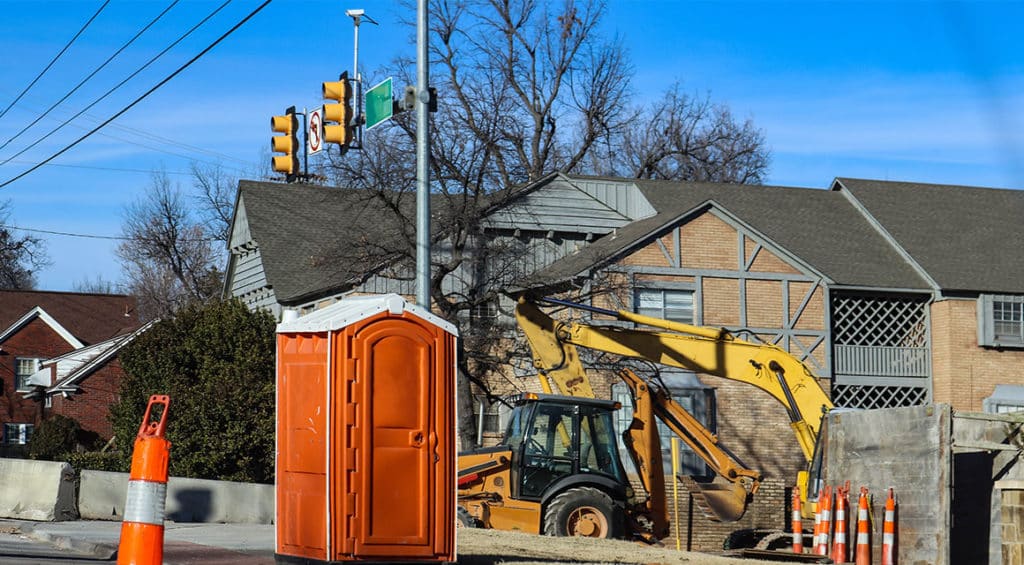Florida Workers' Compensation Lawyers
If you have suffered an on-the-job injury, you might be shocked when your employer or insurance carrier fails to reward your hard work by promptly processing your workers’ compensation claim. Work injuries can cause enormous hardships, including lost income, medical bills, permanent disability, and other challenges. Our experienced workers’ compensation lawyers at Farah & Farah can help you navigate the Florida workers’ compensation system, answer your legal questions, and discuss your right to compensation.
Home » Florida Personal Injury Lawyers » Florida Workers’ Compensation Lawyers
Regardless of where you’re employed or what kind of work you do, things can get complicated after an on-the-job injury. You need time to heal and get back on your feet, but issues with your workers’ compensation claim could get in the way. Meanwhile, medical bills and other costs related to the accident begin rolling in. That shouldn’t happen.
At Farah & Farah, we understand how important it is to have peace of mind during your recovery time. Our experienced Florida worker’s compensation lawyers can help you navigate the workers’ compensation process, answer your questions, and help you understand your options.
Do You Have a Workplace Injury?
Workers’ compensation should be a straightforward process. However, when insurance companies or even your employer try to deny your claim or decrease your benefits, you need someone to step in and fight for what’s rightfully yours.
Many people do not realize how many accidents can happen on the job. You are legally entitled to workers’ compensation after an accident. Workers’ compensation is a no-fault system, meaning an employer need not be at fault for the injured worker to receive compensation.
Getting coverage for your injury can be an uphill battle of denied claims and appeals processes. Hiring an experienced workers’ comp lawyer from Farahh & Farah increases your chances of getting a fair settlement. A knowledgeable lawyer can help process your claim and get the compensation you deserve.
At Farah & Farah, our Florida personal injury attorneys are on your side. Our lawyers have years of experience helping clients navigate the complicated claims process and recovering over a billion dollars for our clients.
We want to see you back at work without any lingering worries over how to pay your medical expenses after an on-the-job injury. By filing a workers’ compensation claim or pursuing a lawsuit, we can compel your employer or their insurance company to pay a fair amount. Let us help you seek a workers’ compensation recovery. Call (877) 245-6707 today for a free, confidential consultation about your situation.
What Are the Benefits of Hiring a Workers' Comp Lawyer?
Looming deadlines, complex procedures, and unfamiliar legal terminology make workers’ compensation cases a trap for the unwary. Our dedicated and experienced Florida workers’ compensation lawyers can guide you through every facet of your case and will do the following:
- Fill out and file complex paperwork.
- Decipher complex documents about your rights, benefits, and responsibilities.
- Counsel you regarding the best strategy to recover compensation.
- Compile and submit supporting documentation.
- Negotiate with insurers and employers for a fair settlement.
- Represent you at hearings and throughout appeals.
Workers’ compensation attorneys can keep the process moving forward when employers or insurance companies drag out the legal process. We have battled large insurance companies and fiercely represented injured workers since 1979. We know what it takes to recover a complete settlement for a workers’ compensation claim.
If you file a workers’ compensation claim, the employer and insurance carrier will do everything possible to reduce your benefits or deny the claim entirely.
Our experienced workers’ compensation attorneys possess knowledge of applicable calculations and standards, such as disability ratings, procedural requirements, and the relative value of claims. Our primary goal is to resolve your claim as quickly as possible so you and your family can focus on recovery. However, should the insurance company refuse to cooperate or offer fair compensation, our team of seasoned litigators are prepared to take them to court and fight on your behalf.
You have the right to pursue your employer in a lawsuit. The workers’ compensation system does not excuse an employer’s intentional conduct or negligence in cases where the employer deliberately concealed or misrepresented a dangerous situation.
What To Expect From Farah & Farah During Your Workers' Comp Case
We know a work injury can be more than just a physical setback. It can be a devastating blow, shattering your sense of security and leaving you to question the very company you devoted yourself to. This is why Farah & Farah attorneys are dedicated to more than just winning your case. We’re ready to help and advocate for you through this challenging time.
Insurance companies and employers often fight workers’ compensation cases by doing the following:
- Disputing that their policy covers your injury.
- Releasing you to work before you’ve recovered.
- Dismissing your claim based on technicalities or incomplete information.
- Denying responsibility for dangerous conditions.
- Hiding evidence of on-the-job hazards.
When you hire Farah & Farah to help with your workers’ compensation case, you get more than just an advocate. We are passionate about protecting victims of workplace accidents. Our attorneys can help you:
- Investigate the accident to determine fault and collect evidence.
- Find the right doctors to accurately diagnose and treat your injuries.
- Pay all authorized medical bills resulting from your injury or illness.
- Collect temporary disability benefits, including payment for lost wages.
- Collect permanent disability benefits when applicable.
- Complete all paperwork needed to successfully file your claim.

Get Results With Our Workers’ Compensation Lawyers
Our attorneys’ passion for taking on large insurance companies and employers is second to none. We’ve recovered over $2 billion for our clients since 1979, including:
- $1.5 million recovered for a worker’s death caused by neglected and improperly-maintained machines.
- $1.3 million recovered for a worker injured on the job who developed reflex sympathetic dystrophy.
- $227,942 recovered for a client whose insurance carrier wanted to delay surgery and downplay our client’s injuries.
- $150,000 recovered for a security guard injured when a gun without a safety mechanism fired.
Our law firm has talented staff to handle your case throughout the entire process. Some have worked for insurance companies before joining the Farah & Farah team, so they know all of the strategies and tactics these companies use to reduce or deny claims. Let our legal team put their experience and skills to work for you.
What Our Clients Say About Working With Our Florida Workers' Compensation Lawyers
Over the years, we’ve amassed countless clients satisfied with our work ethic and the results we delivered. Here’s just a small sample of what they have to say:
“I called Farah and Farah for my W/C case and they called me back within 30 minutes and I got the help I needed and my case manager Lisa Harvey was the best she was professional and very knowledgeable. Mrs Lisa also fought for my case as much as she could do I would highly recommend Farah and Farah for the best Law Firm.” - Lisa Harvey
“I would recommend Farah &Farah. Andrew Miller is a bulldog and is super good at what he does. His paralegal assistant, Claire, is also awesome! She is always quick to respond. My case was also handled by John Thomas, and he knows his stuff when it comes to trucking accidents. Highly recommended as well. I’ve won my case, and now my sons are set for life. I’m very happy with the choice I made!” – Jay H.
“Workers’ comp in Florida is confusing and horrible, but Thanks to Farah & Farah, my attorney Whitney Byrd, and her assistant Melissa, I was able to get what I deserved. Thank you.” – Sabrina D.
Filing a Workers' Compensation Claim in Florida
If you suffer a workplace injury, Florida workers’ compensation laws require you to report the injury to your employer within 30 days from the accident date.
If your injury becomes apparent later, you must bring the claim within 30 days of learning about your condition. Then, the employer must report the claim to its insurance company within the next week. If you comply with proper procedures, Florida’s worker compensation statute of limitations state you have two years to file a workers’ compensation claim.
The employer’s insurance carrier will contact you to coordinate an Independent Medical Examination, or IME. Injured workers must promptly locate an independent medical provider. This medical evaluation significantly impacts the nature and scope of benefits.
Your employer’s workers’ compensation insurance coverage will identify approved medical providers. Even if you suffer a severe injury requiring an emergency room visit, contacting your employer as soon as possible to explain the situation might help you get your employer’s cooperation to promptly process your claim.
How Long Do I Have to File a Workers' Compensation Claim in Florida?
Florida Statutes Section 440.185 specifies you must file a workers’ compensation claim within two years of injury, but an injured employee must give the employer notice of the accident within 30 days.
While you cannot typically sue your employer, you may be able to sue a third party that caused or contributed to your injury. Florida has established a statute of limitations that sets a deadline for filing a civil lawsuit. In Florida, you have two years from the accident date to file a personal injury lawsuit.
While not every workplace accident results in both workers’ compensation benefits and civil damages in a personal injury lawsuit, your Florida compensation lawyer at Farah & Farah can advise you about the best strategy for pursuing your rights and remedies.
Florida Workers' Compensation Benefits
The nature and scope of benefits that you receive depend on the seriousness of your workplace injury or occupational illness. Our Florida workers’ compensation attorneys will analyze your claim and pursue the full benefits you are entitled to, which include:
- Current and future medical costs
- Lost income
- Permanent impairment
- Loss of enjoyment in life
- Death benefits
Workers’ compensation benefits cover all medical bills and treatment of your employment-related injury. Such medical care may include emergency room visits, doctor appointments, physical therapy, and rehabilitative therapy.
If your workplace injury forces you to miss time from work, the workers’ compensation system provides both temporary partial disability (TPD) and temporary total disability (TTD). Both TPD and TTD replace a portion of the wages you lose because of your injury.
Even if you can work in a restricted capacity—such as with limited duties, fewer hours, or movement limitations—you may still be entitled to TPD benefits. If your injuries prevent you from earning at least 80 percent of your wages before the injury, you qualify for TPD benefits. If the nature or severity of your injury prevents you from returning to even “limited duty,” you are eligible for TTD benefits amounting to 66.67 percent of your normal wages.
If you suffer a serious work injury, a doctor will give you an impairment rating once you have achieved the “maximum medical improvement.” The compensation you receive will depend on your specific condition and your impairment rating.
When a worker dies in a workplace accident, workers’ compensation death benefits could include financial support for dependents, spousal educational support, and funeral expenses.
Florida's No-Fault Workers' Compensation Insurance Program
You can collect workers’ compensation benefits even if you are at fault for your work-related injuries. Although you may feel frustrated if someone else was at fault for your workplace injury, the workers’ compensation system does not consider fault after an accident. This expedites medical care and replacement income for workers injured while performing their jobs.
While an injured worker can pursue a separate civil lawsuit against a third party who negligently caused them to suffer a work-related injury, the worker’s fault will rarely impact the outcome of a worker’s compensation claim.
Contact Farah & Farah Today To Fight For Your Rights
Navigating the workers’ compensation system alone can be confusing, especially when you are still focusing on your recovery. The Florida workers’ compensation attorneys at Farah & Farah have aggressively taken on insurance companies for our injured clients since 1979. At Farah & Farah, our team is committed to helping injured workers fight for the compensation they need to get back on their feet.
Call us today at (877) 245-6707 or contact us online to schedule a free consultation with one of our experienced Florida workers’ compensation lawyers.
Workers' Compensation FAQs
If I’m Injured and Take Time Off From Work, Will I Be Paid?
If you can’t work because of your injuries or can’t earn at least 80 percent of your income on limited duty, you can receive partial wage replacement benefits.
What If I Want to Receive a Lump Sum?
If you have been diagnosed with a total and permanent disability, you might qualify for an advance of your future workers’ compensation benefits. However, accepting this compensation could impair your right to future benefits if your injuries worsen. A dedicated workers’ compensation lawyer in Florida can advise you regarding the factors to consider, so you can make the best possible choices for your unique situation.
Are These Benefits Taxable?
Workers’ compensation benefits are generally not taxable. Florida does not have a state income tax. The IRS designates workers’ compensation benefits as tax-free on the federal level. However, exceptions exist, so you might benefit from speaking with a workers’ compensation attorney in Florida about this question.
What If I Was Partially to Blame for My Accident?
The Florida workers’ compensation system is a “no-fault” system. Even if your own negligence causes or contributes to your injury, you can receive workers’ compensation benefits.
Will I Lose My Job If I Apply for My Benefits?
An employer cannot fire you for filing a workers’ compensation benefits claim. If your company fired you for making a claim following a workplace injury, you should immediately seek legal guidance regarding your rights and benefits.
Do I Have to Pay For My Medical Bills?
You will not have to worry about paying medical bills, as your medical provider will submit all authorized bills to your employer’s insurance company for payment.
How Long Will I Receive Benefits?
The maximum time you can receive benefits depends on the benefit type. An injured employee can qualify for temporary disability for up to 104 weeks. Medical benefits do not expire, provided your condition relates to your workplace accident. Impairment benefits continue to be paid based on the time limit for the type and degree of the disability.
My Checks Are Not Coming; What Can I Do?
The first step is to contact a Florida workers’ compensation lawyer. Your attorney can often take steps to move the process forward and learn more about why you are not receiving your benefits. Another critical step is contacting your employer’s workers’ compensation carrier for an explanation.
What If I Cannot Return to My Job?
Suppose your injury is severe enough that you receive a determination of a permanent total disability. In that case, you might qualify for 66.67 percent of your average daily wage if you can’t work. Florida law authorizes these payments up to the age of 75, provided the permanent total disability status remains unchanged.

Do You Have a Workplace Injury?
What Are the Benefits of Hiring a Workers’ Comp Lawyer?
What To Expect From Farah & Farah During Your Workers’ Comp Case
Get Results With Our Workers’ Compensation Lawyers
What Our Clients Say About Working With Our Florida Workers’ Compensation Lawyers
Filing a Workers’ Compensation Claim in Florida
How Long Do I Have to File a Workers’ Compensation Claim in Florida?
Florida Workers’ Compensation Benefits
Florida’s No-Fault Workers’ Compensation Insurance Program
free case review
Client Testimonials


YOU AND YOUR FAMILY

Injured?
Related Blogs














